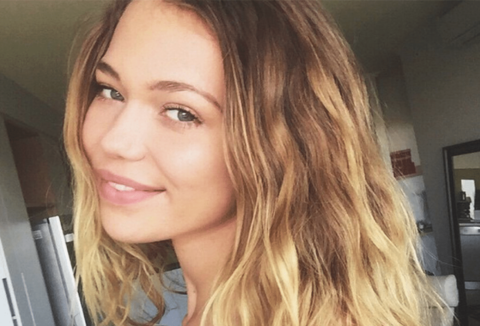Is Essena O’Neill’s Instagram rejection really groundbreaking?

Essena O’Neill, a teenage model with over 800,000 followers on Instagram, made waves earlier this week when she converted her account on the photo-sharing platform from one of bikini shots and sunsets to one of revealing honesty. Deleting thousands of old posts, she began captioning her flattering pictures with the stories behind the shots, encouraging her viewers to understand the artifice behind her photos—and the fact that she was paid to post them.
“Bad acne here, this is a lot of makeup,” she writes under one photo. “Company paid for bikini shoot,” reads another. “Would have hardly eaten that day.” Thanks to O’Neill’s confessions, news outlets all over the world have picked up O’Neill’s new account, deeming her candid captions eye-opening and bold. But is her impassioned message that “Social Media Is Not Real,” as her account name now reads, that groundbreaking?
The world has been bombarded with unrealistic images of women for years in advertising: celebrities and models whose bodies are transformed by make up, Photoshop, or an army of stylists, chefs and trainers. We’ve seen women who look like O’Neill before and understand that they’re not 100% real, and that they’re there—like O’Neill was before her change of heart—to sell us something. O’Neill was a working model like these other women—the only difference is that her platform was not Vogue, a television advertisement or a runway, but her own Instagram account. So why does her story make such waves?
Perhaps it’s because despite its reputation for presenting literally filtered versions of our lives, for the younger generation, Instagram often feels like a place where its participants are safe from advertising. Part of the appeal of following celebrities or models like O’Neill is the guise that you’re seeing a more personal, candid side of someone’s life—and O’Neill’s rebellion reminds us that impression is false, and often capitalized on by brands to promote their products. After all, the appeal to advertisers is undeniable—90% of Instagram users are under 35, and young people in their teens are no longer guaranteed to be reading print magazines or watching live television, and traffic socially in YouTube, Instagram and Facebook, making the content sharing platforms ripe with advertising potential.
However, the massive response O’Neill has gotten for her confessions suggest that the same audience brands seek to target—that 90%–is the same audience that isn’t willing to take it anymore. Perhaps this story of unrealistic definitions of beauty in advertising has made waves because the younger generation, distanced from print magazines and traditional advertising, pays attention when someone like O’Neill, or star Zendaya, take to Instagram to pull back the curtain on sponsored content. While it may feel like old news that the media propones unrealistic images of women, perhaps O’Neill and the women of her generation are just the people we need to band together and express enough anger to cause change, and in doing so, become the heroes of a younger generation—in which case yes, O’Neill is certainly newsworthy.







